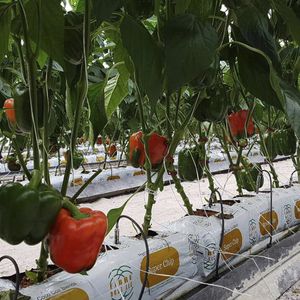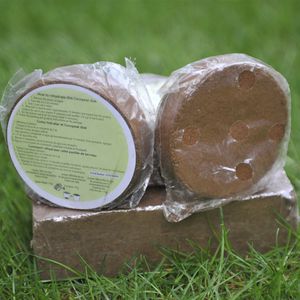
Coco peat growing medium Coconut Coircoconut fibersoil blockcompact
Add to favorites
Compare this product
Characteristics
- Type
- coco peat, coconut fiber
- Format
- soil block
- Other characteristics
- compact
Description
FibreDust’s 5KG 100% Coco Coir Peat Block is a staple in the coco coir industry and a primary growing media for agriculture and horticulture. Coir, or as it’s often called “coco peat,” is made from the husks of coconuts and as such is a renewable resource for growing and gardening. FibreDust manufactures and exports coco coir from our own factories in India and Sri Lanka. FibreDust Coir is used in many well known popular potting mixes sold in retail garden and big box stores everywhere.
Coco coir is also used for reptile bedding, worm farming, and mushroom cultivation
Coir: Eco-Friendly, Sustainable, Organic
In Agriculture, coco coir pith or “coco peat” is used extensively for growing tomatoes, cucumbers, eggplant, strawberries, blueberries, peppers and cannabis. It is a great fit for hydroponic and traditional growing methods. FibreDust 5 kg coir blocks are available either pre-wrapped for retail sale or unwrapped for agricultural or horticulture use, FibreDust’s 5Kg (11lb) blocks of coco peat have a 5:1 compression ratio. Each block re-hydrates to approximately 2.5 cu ft or 15 gallons (60-65 litres) of “soiless” growing medium.
•Coir blocks measure 30x30x12cm (12x12x6in)
•Water holding capacity 7-8 times
•Air Filled Porosity 10-12%
•Electrical Conductivity <.8
•pH 5.8 to 6.8
•OMRI Listed
•Pallet qty 200
•Pallet wt 1 metric ton
•Load Capacity 40′ HC 20 pallets, 20 MT, 4000 blocks
Catalogs
No catalogs are available for this product.
See all of Fibredust LLC‘s catalogs*Prices are pre-tax. They exclude delivery charges and customs duties and do not include additional charges for installation or activation options. Prices are indicative only and may vary by country, with changes to the cost of raw materials and exchange rates.



